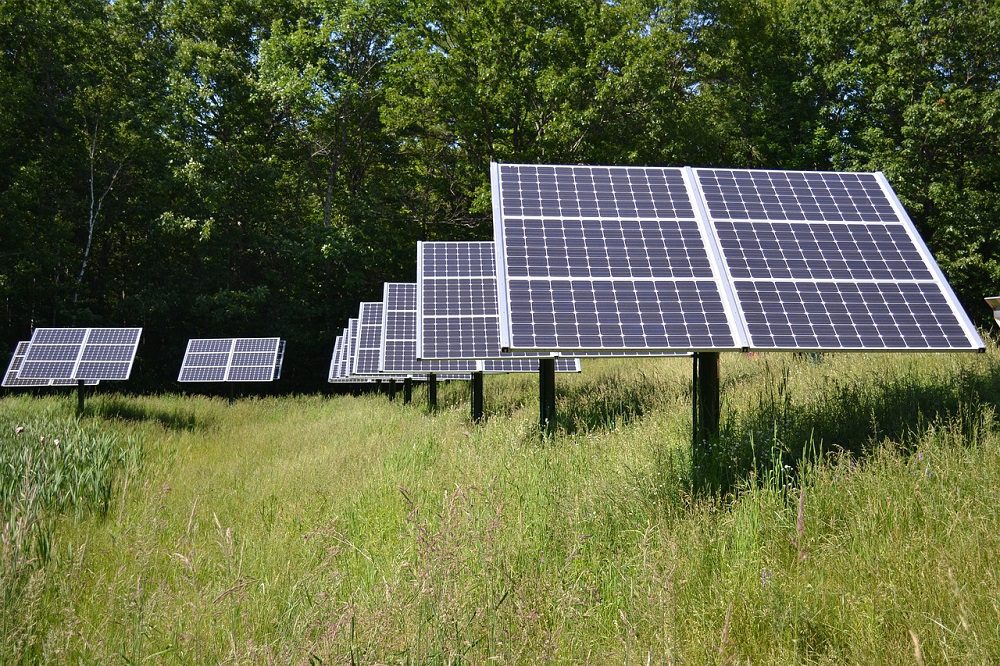Concrete ‘batteries’ may someday store green energy

A substance used to write ancient Biblical scrolls may have a modern application in helping to store energy harvested from renewable sources.
Carbon black – very fine charcoal – combined with cement and water has been found to create a super-capacitor, which serves as an alternative to batteries.
Cement itself is an ancient material, too – Roman concrete remains startling for its properties – but it doubtless raises eyebrows to consider that these substances together could provide a low-cost and scaleable answer to modern energy challenges.
According to the researchers behind this ‘alchemy’, the technology could provide cheap storage systems for electricity generated from renewable sources, such as solar, wind and tidal power; in turn this could facilitate greater use of such zero-carbon energy sources.
Indeed, according to the research team at the Massachusetts Institute of Technology (MiT) in the United States, such a super-capacitor could be incorporated, say, into the concrete foundation of a house.
It could, they claim, store a full day’s worth of energy, while adding little if anything to the cost of the foundation while providing the necessary structural strength.
Going further, the MiT researchers also envision the prospect of concrete roadways able to provide contactless recharging for electric vehicles travelling the road.
That may sound a little sci-fi, but innovation often starts that way.
Admir Masic, a professor at MiT, said: “The material is fascinating, because you have the most-used man-made material in the world – cement – that is combined with carbon black, that is a well-known historical material – the Dead Sea Scrolls were written with it.
“You have these at least two-millennia-old materials that when you combine them in a specific manner you come up with a conductive nanocomposite, and that’s when things get really interesting.”
Masic, along with fellow MiT professors Franz-Josef Ulm, and Yang-Shao Horn, and four others at MiT and at the Wyss Institute for Biologically Inspired Engineering, described the technology in a paper published in the journal PNAS.
We have the capacity
Capacitors are in principle very simple devices, they explain, consisting of two electrically conductive plates immersed in an electrolyte and separated by a membrane.
When a voltage is applied across the capacitor, positively charged ions from the electrolyte accumulate on the negatively charged plate, while the positively charged plate accumulates negatively charged ions.
Since the membrane in between the plates blocks charged ions from migrating across, this separation of charges creates an electric field between the plates, and the capacitor becomes charged. The two plates can maintain this pair of charges for a long time and then deliver them very quickly when needed.
Supercapacitors are simply capacitors that can store exceptionally large charges.
The amount of power a capacitor can store depends on the total surface area of its conductive plates, which is where the MiT team’s research comes into play.
By introducing the carbon black – which is essentially highly conductive graphite – into a concrete mixture along with cement powder and water, then letting it cure, the water naturally forms a branching network of openings within the structure as it reacts with the cement.
The carbon migrates to these spaces to make wire-like structures within the hardened cement. As the researchers explain, these ‘wires’ have a fractal-like structure, with larger branches sprouting smaller branches, and those sprouting even smaller branchlets.
The result is an “extremely large” surface area within the confines of a “relatively small” volume. The material is soaked in a standard electrolyte, such as potassium chloride.
Two electrodes made of this material, separated by a thin space or an insulating layer form a very powerful super-capacitor, the researchers found.
The two plates of the capacitor function just like the two poles of a rechargeable battery of equivalent voltage: When connected to a source of electricity, as with a battery, energy gets stored in the plates, and then when connected to a load, the electrical current flows back out to provide power.
Concrete future
Supercapacitors made of this material have “great potential” to aid in the world’s transition to renewable energy, says MiT’s Ulm.
The principal sources of emissions-free energy, wind, solar, and tidal power, all produce their output at variable times that often don’t correspond to the peaks in electricity usage, so ways of storing that power are essential.
“There is a huge need for big energy storage,” he says.“[E]xisting batteries are too expensive and mostly rely on materials such as lithium, whose supply is limited, so cheaper alternatives are badly needed.
“That’s where our technology is extremely promising, because cement is ubiquitous.”
According to Ulm, the technology offers “a new way of looking toward the future of concrete as part of the energy transition”.
Read next: Heathrow trials lower carbon concrete
Are you a building professional? Sign up for a FREE MEMBERSHIP to upload news stories, post job vacancies, and connect with colleagues on our secure social feed.





Responses